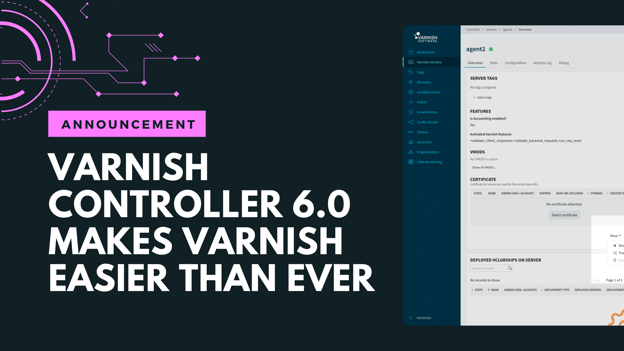Your company has undoubtedly spent a lot of time and money on marketing and advertising campaigns, getting ready for the biggest sales day of the year: Black Friday. This chaotic shopping boom has extended itself to include the entire weekend, culminating with Cyber Monday. All the planning, spending and the best campaigns in the world can’t help you at all if your website goes down at the first sign of stress or aren’t optimized to handle the flood of traffic days like Black Friday deliver.
The digital move to global Black Friday
A brick-and-mortar store would never dream of understaffing its stores or scrimping on merchandising on Black Friday. The same kind of ramp-up, preparation and stress-testing needs to be a part of the digital retail experience as well.
Each year, the number of consumers who move online for their holiday shopping (e.g., those looking to cash in on deep discounts online and aiming to avoid the zoo of real-life/in-store shopping) grows. This means that your websites, especially during peak traffic periods like Black Friday, are part of your critical sales infrastructure and account for a growing proportion of your revenue.
Ramping up your site for traffic explosion
In the US, the birthplace of this shopping fest, there were 151 million shoppers celebrating Black Friday in 2015. While plenty of people brave the crowds and consider Black Friday shopping as part of the ritual, many have opted to forgo the crowds and queues and shop from the comfort of their own homes, which also conveniently means that they can shop even on the Thanksgiving holiday itself. In 2015 this translated to USD 4.45 billion in online sales for Thanksgiving Day and Black Friday! Mobile shopping also increased markedly. Overall holiday sales, according to the National Retail Federation, increased 3% to USD 626.1 billion, of which a healthy USD 105 billion came from online and other non-store holiday (growth of 9% from last year).
The US is not alone in getting in on the action. In 2015, Black Friday was the first time that UK shoppers’ spending topped GBP 1 billion in a single day.
The make or break for e-retailing
The point here is: this holiday shopping period is many retailers’ (traditional and online) bread and butter, accounting for anywhere from 22-30% of annual revenue. For some specialized retailers, such as jewelers, it's even higher at nearly 40%. It’s a period when many retailers break even for the year - or don’t. And getting started on ongoing and early promotion makes more and more sense to retailers, as the shopping period has begun earlier and gone on longer each year with the accessibility of cross-device shopping: more than 15% of retailers have already begun their marketing efforts by October 1st.
Making a list, checking it twice
Given this set of trends, and knowing that year after year, some of the best-known, famous names in online retail have tried (and sometimes failed) to scale for the traffic peaks, focusing in on scalability, resilience and performance need to be on your list of must-haves. Despite knowing that stress-testing for volume is required to meet the demands of holiday-time sales and marketing, many major retailers still trip up:
- In 2014, UK retailer Argos, despite launching sales campaigns well ahead of Black Friday, couldn’t keep its website online – it went down within hours of its sale starting.
- In 2015, major US retailer Neiman Marcus’s site was up only intermittently, delivering an error message. They were forced to extend their limited-time sale to make up for the inconvenience to users.
This is never good - no matter the time of year, but it can lead to amplified consumer frustration and an even greater and more obvious loss of revenue to those e-retailers who rely on Black Friday and this shopping window.
Don’t stand for downtime: Not just a tech problem any more
Long perceived as the domain of IT/tech departments, more and more spend sits with marketing departments (as more marketing becomes automated and website performance is tied directly to the bottom line). Everyone has a stake in ensuring that an e-commerce website not only never sees downtime in these critical periods but that user experience is seamless (which is directly tied to performance). Suddenly the technology powering these huge, complex and business-critical sites is a big concern to all levels of the business.
Site performance, page-load speed, up-to-date product information and the ability to process purchases and payments quickly make up the foundation of how online Black Friday sales will succeed (or not). These factors help ensure that consumers stay on your site, are satisfied with their experience and follow through on their browsing to complete purchases. Millisecond delays can frustrate a consumer to the point of making them abandon your site and even a full shopping cart; what can you do to make sure they stick with you?
- Keep your e-commerce website up and running at all costs: High availability solutions, such as those in Varnish Plus, will ensure that your site will not go down no matter how much traffic hits it.
- Keep your eye on performance: Speed matters, and your bottom line and traffic numbers will tell you that. With Varnish Plus’s real-time statistics engine, you will get real-time insight and information about your website performance and user behavior, allowing you to track, e.g. the most popular products and update product offers as fast as possible.
- Keep your eye on the information: While speed makes a big difference to users and their perceptions, displaying accurate, up-to-date information on your site also makes for a more seamless user experience. Sophisticated, granular cache invalidation/purging will help ensure that your information is current.
Don’t risk losing valuable sales and angering consumers who are hungry for a holiday deal. Safeguard your site - and your brand - to ensure a happy holiday season and that you hit your annual sales targets. Make sure your marketing campaigns count: Find out how to get your site ready for the traffic spikes and spending frenzy of Black Friday. Don’t wait until your site is already down to discover just how much poor web performance costs.
To learn more, download our white paper, The high cost of poor performance.
Photo (c) 2013 Mike McCune used under Creative Commons license.
/VS-logo-2020-197x60.png?width=136&height=60&name=VS-logo-2020-197x60.png)




